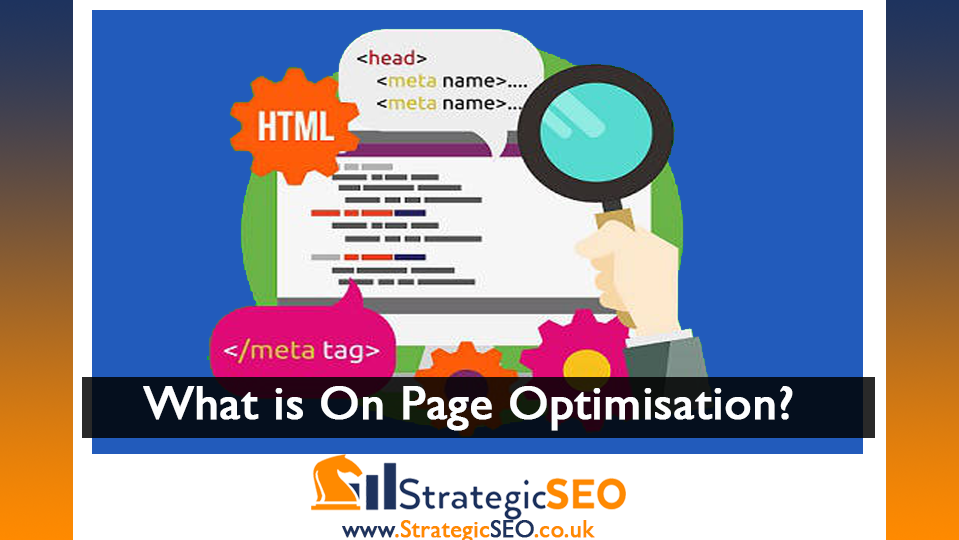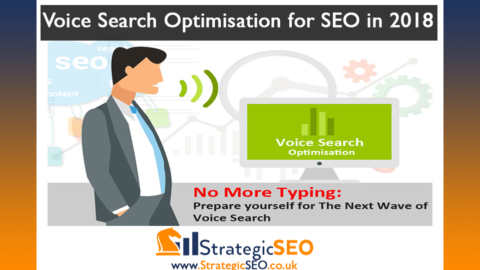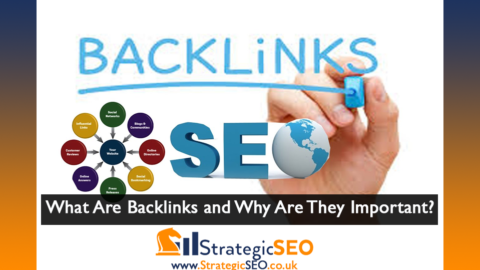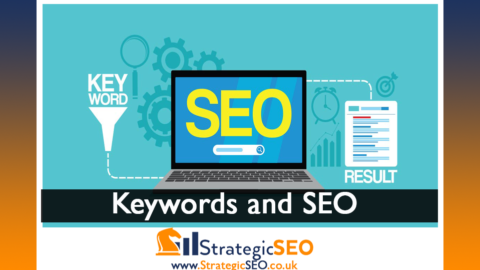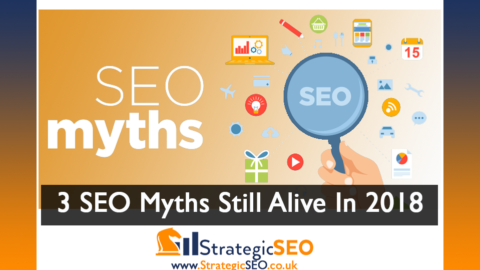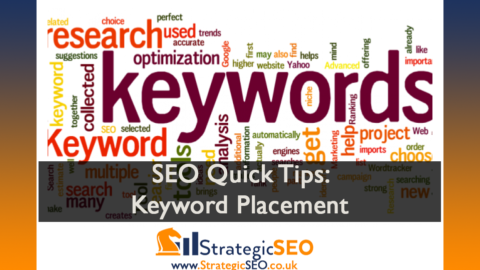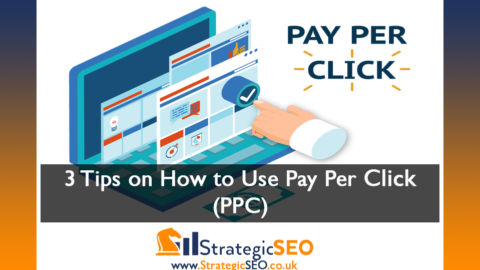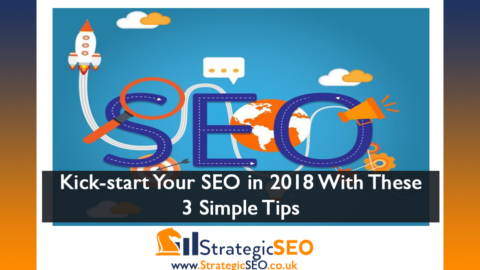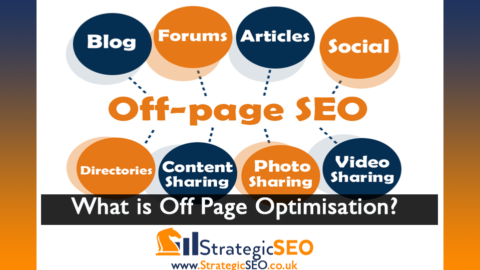What Is On-Page SEO
Any business or company that has a website knows that SEO (search engine optimisation) is very important for growth, especially if you want to accumulate organic web traffic. If you want your website to be ranked highly on search engines you need to ensure that your website is properly optimised using a white-hat strategy. Although SEO branches off into various different categories there are two very important categories that should be focused on:
-
On-Page SEO
-
Off-Page SEO
Marketers who have been in the game for a while will know that although Google are constantly updating their algorithms these two SEO techniques have not changed and are here to stay for the foreseeable future. Although very different, both are crucial for your SEO strategy and it is important that you understand the difference between the two.
Below we are going to outline what On-Page SEO is and what factors should be considered as best practice when optimising your website.
What is On-Page SEO?
This is probably the easier of the two as you have direct control and access over the success of it. On-Page SEO refers to the direct actions taken to optimise a website and it’s pages with a result of improving search engine rankings. This does not only refer to web pages but also to any content that is posted within your website. The great thing about On-Page SEO is that you have direct control over it and can update and change it at any time you want. This also means that as with every aspect of SEO On-Page optimisation should be maintained and constantly updated to ensure you maintain and improve your rankings. The good news is there are several elements that make up On-Page Optimisation which make it easier to manage and take control over.
These factors are as follows:
-
Headings
It is pretty self explanatory, headings are an important feature as it is generally the largest text on the page and the main piece of information that indicates to people what they are about to read. It is important that your headings are focused on specific keywords and related to the content it is about. Just as human being uses a heading to figure out what a piece of text is about, so does Google.
Headings can be sub-categorised into tags such as H1 (Title), H2 (Subsections), H3 (Smaller Subsections) and so on, these all refer to the different structured headings of a page e.g. in this article the title of this article would be formatted inside a H1 tag. ‘What is On-Page SEO?‘ is formatted inside a H2 tag and ‘1.Headings‘ is formatted inside a H3 tag.
H1 will always refer to the Title of the page and will only be used once, whereas H2 and H3 can and should be used various times throughout a page. The aim of this is to ensure a page is structured in a way that is easy and accessible for anyone who is to read it. -
Meta Description & Tags
This is the ‘short description’ used to summarise your web page’s content, it is usually between 160 and 300 characters long.
Your meta description will be shown beneath the title of the URL on a search engines result page to show a user what a page is about. It is very important that the description involves what content is on that page including specific keywords that will be picked up by Google crawlers.
Optimising your meta description is very important for SEO as your ultimate purpose is to get visitors to click on your website and in turn increase your click-through-rate (CTR). Google uses your CTR as one of the very many factors when considering your ranking position. -
URL Structure
In basic terms, your URL is the equivalent of a house address for the internet. Think of your browser as a Sat Nav and your URL is the address it needs to find. It is important that your URL is structured in an organised fashion and contains specific keywords to allow search engines to be able to crawl through your website quickly and efficiently.
A clear and concise URL structure makes navigation through your website easy and user-friendly for your visitors as well as making it obvious to crawlers what each page is about. The more structured and keyword specific your URL is the more likely it is that it will be indexed correctly and subsequently more likely visitors will click on it, again increasing your CTR. -
HTTPS & SSL
Secure socket layer (SSL) certificates is a measure of security, it is digital certificate that authenticates the identity and authority of a website.
Having an SSL certificate is very crucial to any business with a website as it is a form of proof of trustworthiness, visibility and it also lets your visitor know that their visit is safe and secured.
SSL certificates encrypt information sent to the server to ensure that no third party can come between your web server and your visitors web server. This is also an important factor for SEO as Google have now added this to heir list of factors to consider when ranking your website for SEO. Websites that do not have SSL certificates will be penalised and will drop in rankings.
-
Page Performance & Load Speed
Nobody likes accessing a website that is sluggish and slow, it is a very frustrating experience for users and will only make them leave your website and never return.
As well all the factors mentioned above, page speed is an on-page ranking factor and it is your responsibility to ensure that your website and pages load at a fast rate. You need to ensure that page performance and loading is optimised for both desktop and mobile versions otherwise you risk the increase of being ranked lower in the SERPs due to a higher bounce rate which is another factor Google take into consideration when ranking.
Slow speeds will really see an increase in your website bounce rate, be sure to test all of your web pages and optimise where appropriate.
-
Page Content
Information that you have on your pages needs to be relevant and useful to your audience, if not it will only frustrate visitors and make them leave giving you a higher bounce rate.
Information should be structured appropriately and easy to read for anyone that visits your website. If visitors search for something specific and land on your website the information should be what they are looking for and add value to their existing knowledge. When adding content to your web pages is highly advisable that the information is of relevance while still including keywords and phrases that will help rank your site.
Content should be regularly updated and not contain any old information. Good content writing is an important on-page SEO feature that will help drive more traffic to your website which in turn is great for ranking.
Grammar that is appropriate tyo your target demographic is also a very important factor to consider. Using complex words for an audience that is looking for something simplistic or a simple guide will obvious turn them a way no matter how helpful or thorough that content is. -
Image Optimisation & Alt Tags
Image optimisation goes hand in hand with page performance and speed, the size and speed of an image should be considered when adding them to your website. Having images that are too large and take long to load will only reduce the performance of your website.
Alt tags are used for naming the images within your website, all images should be named accurately to ensure visitors understand the content of your images. These tags are invisible to any visitor, however they are used to help search engines crawl through websites to identify the relevance of the content and will help your site to rank.
Using Alt tags will also help any visitors who are visually impaired or blind. This demographic use screen readers which will read to them the alt tag of an image on a page – if your alt tag is missing then your website is not very friendly to them and the image will not be understood being simply described to them as ‘image’. Not being friendly to visually impaired users will have a negative effect on your rankings. -
Link Optimisation (Internal Links)
Link optimisation is the process of forming internal links within your website that point to another area of your website, they help define a structure within your website that enables you to connect related content.
Good link optimisation will improve your sites quality and make it easier for Google to crawl websites to find out what content is related and of a similar subject matter through your various pages. If Google finds it easy to navigate through your website structure through the use of internal links they will increase your ranking accordingly.
Internal linking is great for indexing your website, if a particular page is linked many times internally, whilst staying relevant, then that page will set itself as somewhat of an authority within your structure.
All of our SEO packages include both on-page and off-page optimisation so if you are ever in doubt then speak with one of our SEO experts who would be happy to answer any questions you have.
Strategic SEO – London’s number one social media experts

